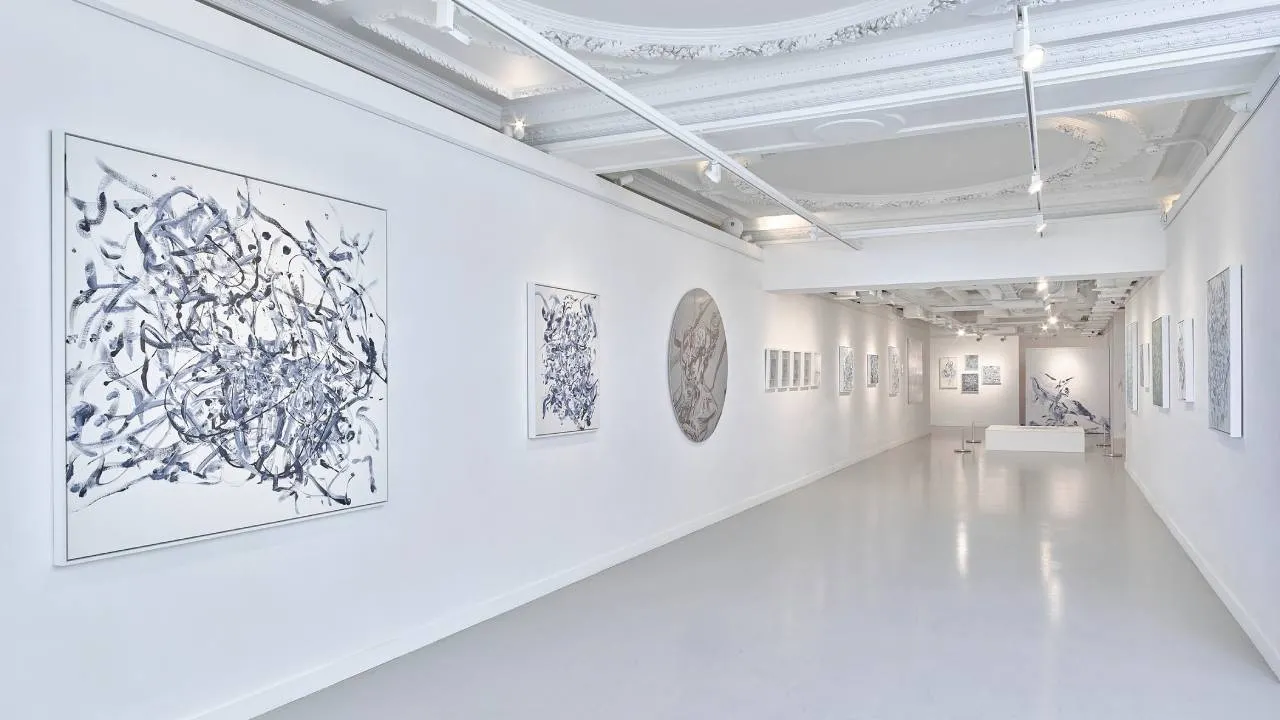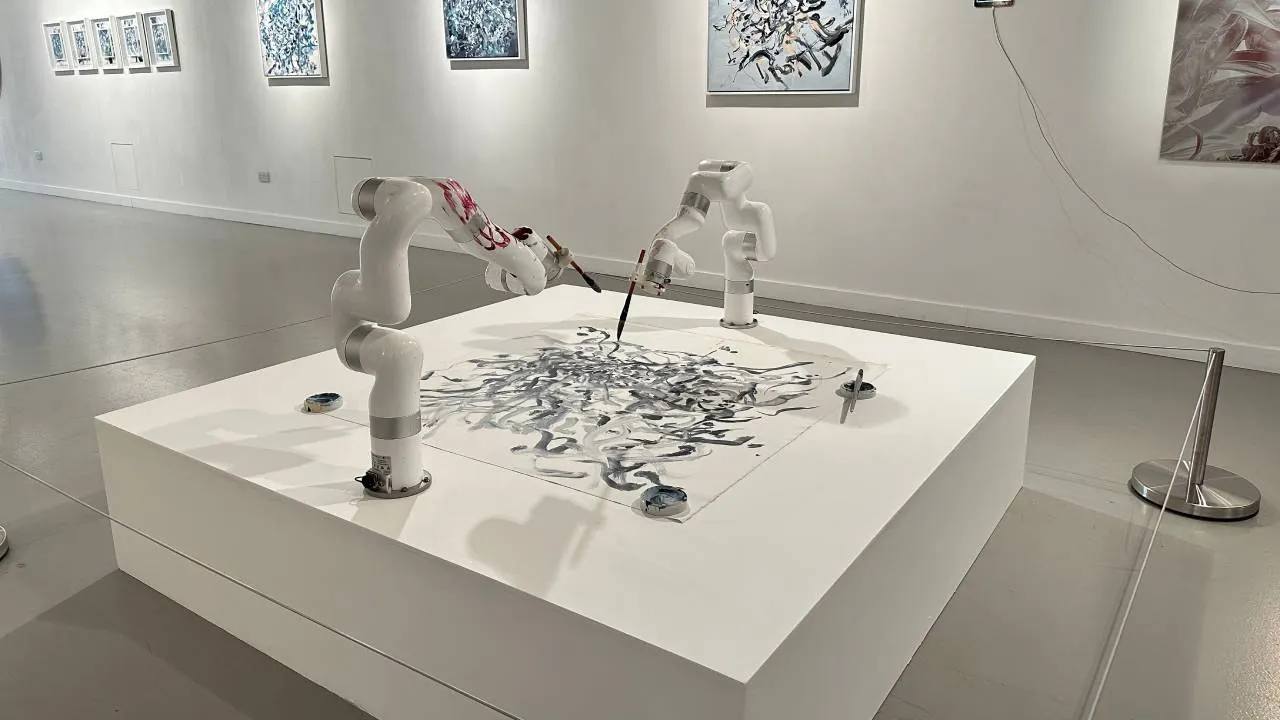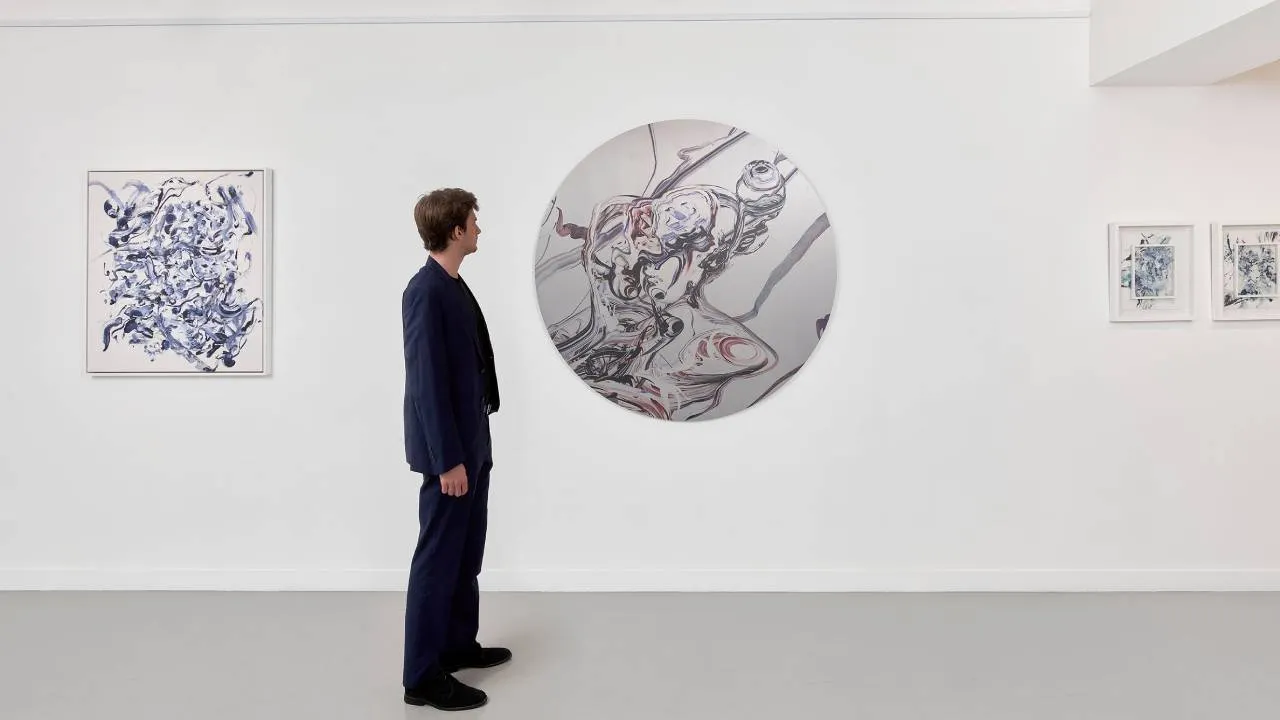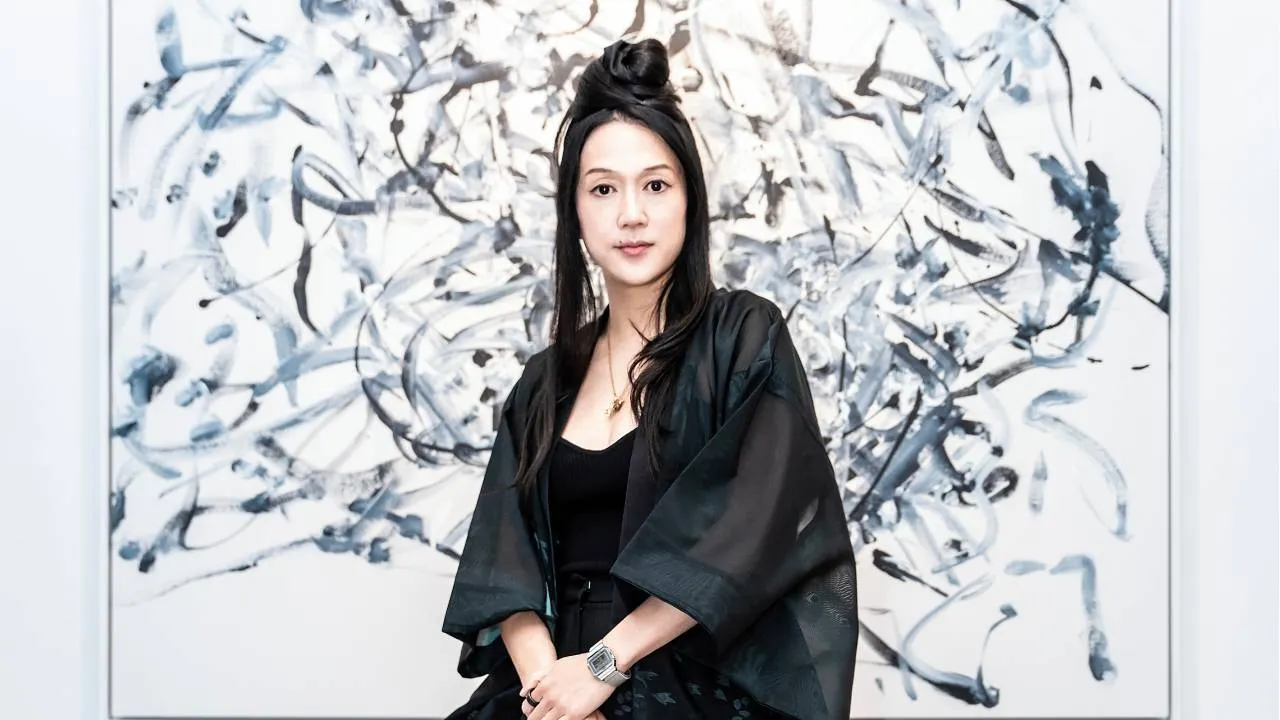Since 2015, artist Sougwen Chung has pioneered the use of AI and robotics in their work, producing a series of artworks built on the principle of “human-machine collaboration.”
A new exhibition at London’s House of Fine Art (HOFA) gallery, “Relational Gestures,” showcases work from Chung’s recent career, including their iconic paintings produced using robotic arms, AI models trained on their previous body of work, and biofeedback trackers.
“I think I’m always looking to the future, really,” Chung told Decrypt’s SCENE at HOFA. “I don't know if that sounds a bit cheesy!”
A former fellow of MIT Media Lab and Google Artist in Residence, Chung was recently named as one of Time magazine’s 100 most influential people in AI.

Chung’s practice has evolved with developments in robotics and AI, they explained. “I typically find something that I'm interested in,” Chung said. “Obviously, meditation and biofeedback [are] sort of the focus of this painting series. Prior to that it was open flow and the movement of cities; prior to that it was the current neural networks.”
Throughout their career, Chung has worked alongside DOUG (Drawing Operations Unit: Generation ___), an evolving series of AI-powered robots. The first generation of DOUG used robot arms that attempted to duplicate the artist’s pen strokes, relying on the robot’s limitations to produce spontaneous effects.

“I think in the very beginning, something that motivated the practice was speculating at the beauty of a non-human move,” they said, referencing Go player Lee Sedol’s quote after his defeat by the deep learning program AlphaGo. “I really loved that, because it meant that his engagement—even through defeat—with his digital opponent meant that he was broadening his internal model of what was possible within the game and what was possible within how he saw beauty,” Chung said.
The more recent works featured in the exhibition highlight Chung’s interest in “new human-machine configurations that are connected to biofeedback.”
To create these works, the artist uses an EEG headset that tracks their brainwaves as they meditate; their robotic “assistants” then respond to these biofeedback signals, tracing patterns with paintbrushes alongside Chung’s own brushstrokes.
Also included in the exhibition are a series of works in which the artist “paints” in virtual reality, with the resulting patterns printed onto aluminum discs. “I’ve been thinking about gesture quite deeply,” Chung said, explaining that they designed a system in VR to “essentially record my drawing sensibility and my brushstrokes, in a way that not only can be brought in and sculpted in virtual reality space, but also printed.”
Upcoming works, Chung added, will include 3D versions cast in aluminum. “It’s also become the basis for a new drawing data set in three dimensions for a forthcoming generation of DOUG.”

Chung has also founded SCILICET, a studio exploring human and non-human collaboration.
“I've been thinking about human and machine collaboration for quite some time, interpreting that under my own lens, and under my own traditions—thinking, obviously, a lot about drawing and cultural hybridity as a Chinese-Canadian artist,” they said. “But I realized that there are many different types of interpretations of human and machine collaboration,” Chung added, noting that they’ve set up the studio “to support and try to find like minds, who are also bridging tradition and technology in their own way.”
While Chung’s approach to AI focuses on collaboration, the wider art world is wrestling with the implications of the technology. “I do think there are a lot of different ways to look at the relation between ourselves and artificial intelligence, and I'm quite interested in all manners of speculation around it,” Chung said. “I'm actually quite interested personally in exclusively critical work, because I think that has a lot of intellectual rigor and a lot of passion and heart.”

For their part, Chung hopes that their work “straddles a line between hope and despair, hope and fear, that allows people to sit with it—because I think it can be a very difficult topic. It can be a very existentially uncertain topic and we need spaces and to always broaden the conversation about what that means for humanity.”
“We’ve built systems in a certain way that are always flawed, they're always fragile; they're always brittle, as we are,” Chung added. “I think there are ways to design more just, more fair systems, but we should never assume that any technology is neutral, because it isn't. It's neither good nor bad.”
Edited by Andrew Hayward
